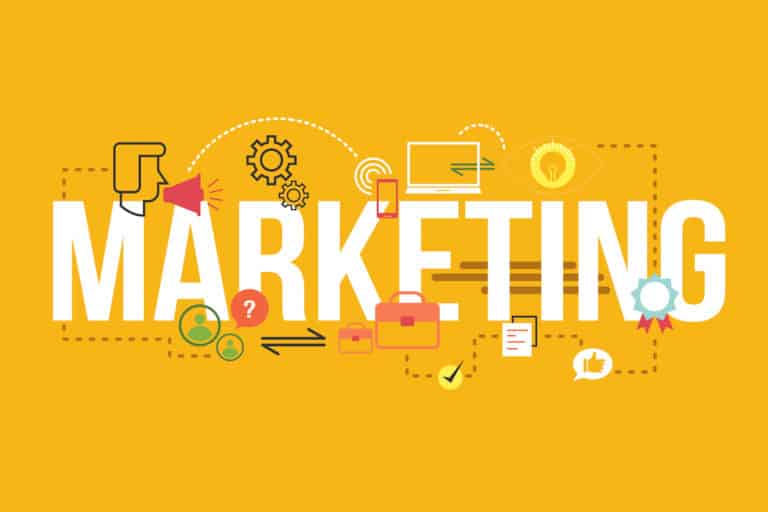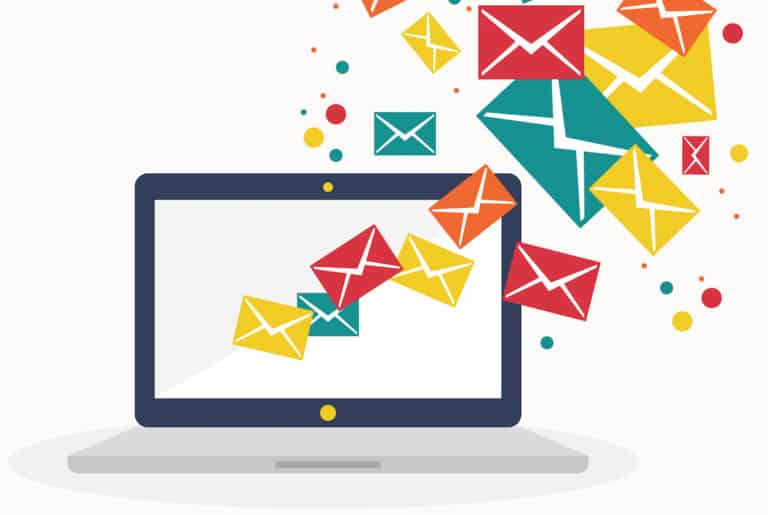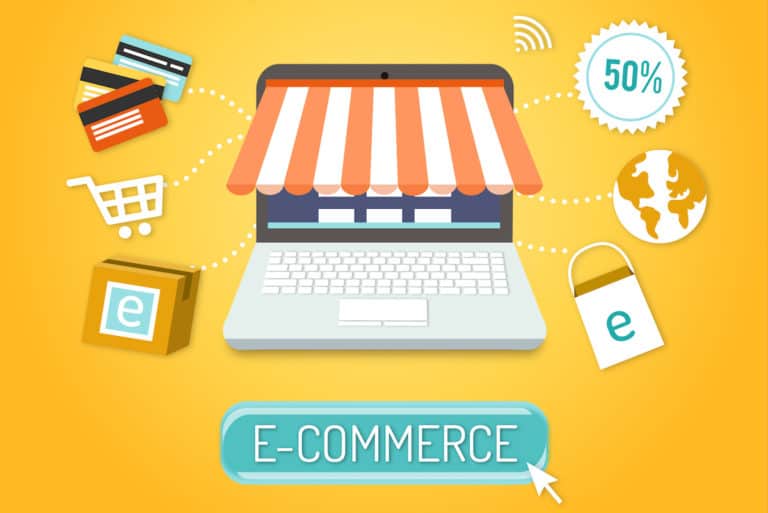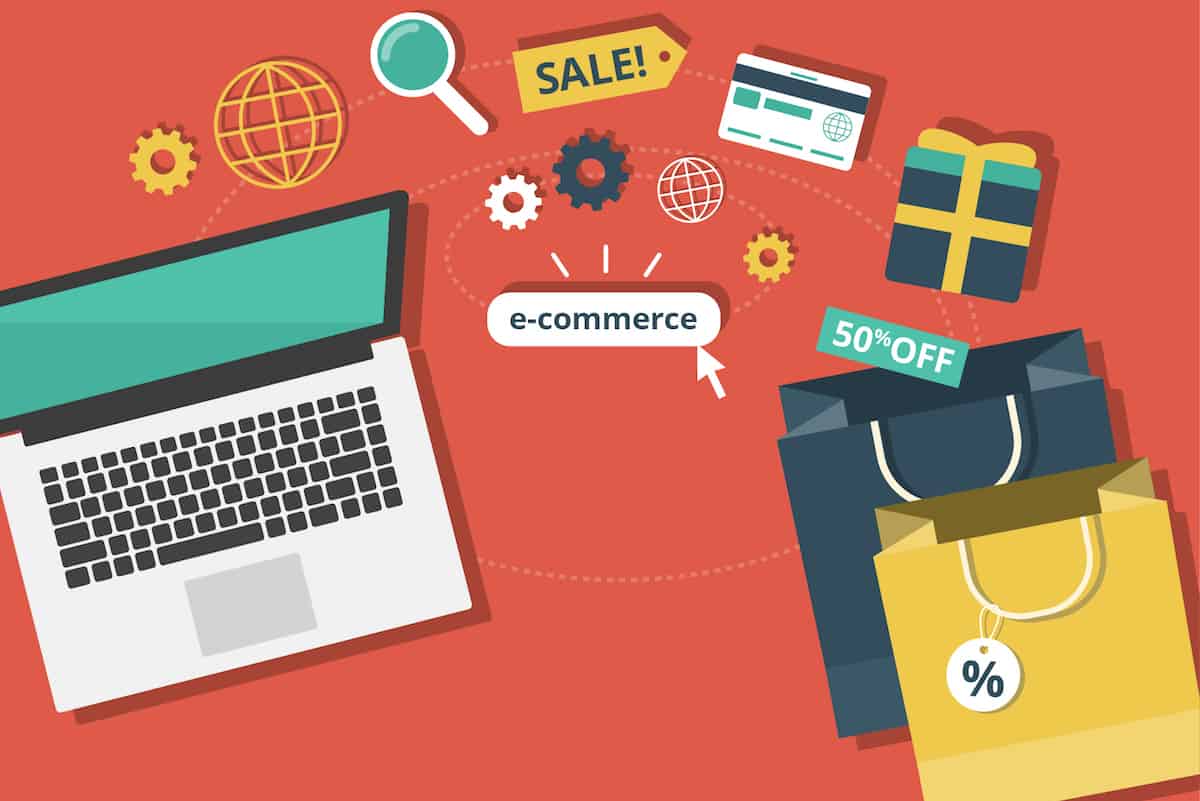
Developing a solid eCommerce marketing strategy can be tough for new online stores.
In one survey by Shopify, new store owners were asked about their overall customer acquisitions strategy, with the most common responses being “social media,” “SEO,” and “friends and family.”
While these answers are perfectly acceptable, the conductor of the survey noted that around two thirds of participants answered “vaguely” and seemed to have no idea as to whether or not these strategies would actually work.
And that begs the question of whether social media, SEO or “friends and family” is really the best marketing strategy for new stores? Maybe not.
One eCommerce marketing strategy missing from that list may actually hold the key to driving traffic for new stores: email marketing.

Ecommerce Marketing Definition: What Exactly Is It?
According to BigCommerce, eCommerce marketing is “the process of driving sales by raising awareness about an online store’s brand and product offerings.”
It’s not too different from traditional marketing, except that the focus is on driving digital traffic (instead of physical traffic to a store’s location) and optimizing the online user’s buying experience.
This requires a strategy that brings awareness to your brand in a sea of thousands or even millions of other brands competing for the same attention.
Unlike traditional marketing, you’re not just competing in your local market. You’re competing with digital stores from every corner of the world.
Ecommerce Marketing Ideas: Why Email is Best
Your ability to compete on the Internet comes down to having the best eCommerce marketing ideas. But which one is best, exactly?
The one we most often recommend is email marketing.
According to ExtraDigital, “The use of email marketing and the returns from email marketing could not be better or stronger than they are today.”
While social media and SEO are good first steps to driving traffic, email marketing is much more effective at gaining conversions, which is what new stores really need.
Email marketing is much more effective at gaining conversions Share on XA joint study from Shop.org and Forrester Research found that 85% of US retailers consider email marketing one of the most effective customer acquisition tactics, and another report by Salesforce noted that 49% of marketers (up from 20% in 2015) claimed email was ”directly linked to their business’ primary revenue source.”
Part of the reason that email marketing is so effective as an eCommerce marketing strategy is the fact that it’s more personalized and targeted to individual customer needs as well as being highly actionable and measurable in a way that other strategies are not.
It’s also more cost effective than other solutions, since it has a much higher rate of conversion than social media, SEO or even PPC advertising.
Email Marketing Campaigns With the Highest ROI
They key to successful email marketing is having a well-crafted campaign. Just sending out emails won’t drive conversions unless you have goals in mind. Here are a few of the highest converting campaigns that new stores should consider when developing an email marketing strategy.
Welcome Email Campaigns
When someone signs up to your mailing list, the first thing they should receive from you is a “Welcome” email. This first email represents a fantastic chance to upsell, create credibility and trust, and enhance your brand.
While technically a type of transactional email, a welcome email is also the perfect opportunity for providing information for customers to aid in their purchasing decisions.
There are a few different advantages to sending this type of email:
- It sets an expectation. The customer knows that you’re going to be emailing them, what your emails will look like, and can whitelist your address.
- It confirms their subscription. A lot of customers will hand over their email address without much thought, but a welcome email tells them to expect more emails so they know that you’re more than spam.
- It’s easily automated. There are plenty of ways to set up emails that trigger upon a certain event (such as a new person subscribing), which makes it a no-brainer for stores.
Welcome emails allow you to showcase your brand’s personality and to highlight the value that recipients can expect to receive.
If you’re welcoming new users to a product or service, the welcome email is a great place to explain how everything works and what users need to do in order to get started, which, if done right, can lead to immediate conversions.
Lead Nurturing Campaigns
Lead nurturing campaigns are the next step up from welcome emails. They’re designed to build your list and target specific subscribers with specific offers. While they’re more time consuming to develop than an automated welcome message, they have a much higher conversion rate than other types of emails.
According to Hubspot, lead nurturing emails achieve 4-10 times the response rate compared to standalone emails.
Lead nurturing campaigns might include emails about store updates, new products, changes in prices or discounts available to the customer, like free shipping for a limited time only.
These emails can also be automated, but you may need to create several different types of emails to send to segmented lists. For example, new customers may receive free shipping on their first orders, while a returning customer may get a more tailored email based on products they have already purchased.
Email Recovery Campaigns
Email recovery campaigns – also known as abandoned cart emails – are another highly profitable marketing idea, especially for new stores (and it’s an eCommerce marketing service we specialize in).
Recovery emails are sent to customers who have added products to their cart but failed to check out.
In one study by ReturnPath, email recovery campaigns sent by 33 retailers were monitored to see how effective they were at converting lapsed customers into active customers.
They found that:
- 92% of the win-back emails made it into inboxes
- 45% of recipients who received the win-back campaigns read subsequent emails from the retailers
- Emails with the phrases “miss you” or “come back” in the subject line had read rate of 13%
In another study by Internet Retailer, they noted that 66% of all cart conversions come from email, and according to Salecycle, read emails have an average conversion rate of 30%.
This makes recovery (abandoned cart) emails one of the most effective email marketing strategy – if not the most effective strategy – for new retailers looking to convert customers.
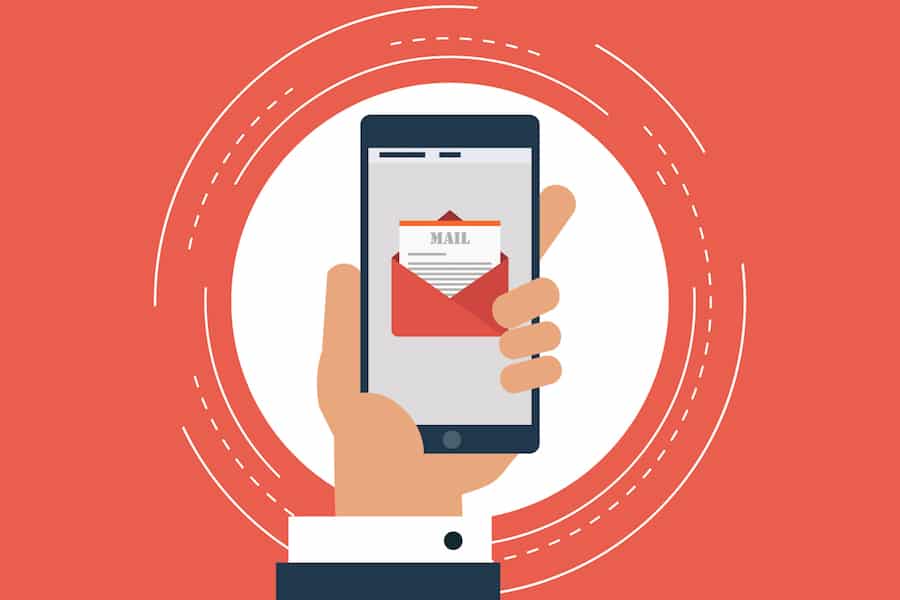
Boosting Your ECommerce Marketing Strategy ROI with Email
Email is a key component to a solid eCommerce marketing strategy. But how do new retailers get started with email marketing, especially if they don’t have a large list to work off of?
First, it’s okay to use other marketing strategies to drive traffic to your site. Again, social media, SEO and even PPC advertising are excellent ways to raise brand awareness and build a loyal following.
Once visitors are at your site, the real work begins.
Make it easy for subscribers to sign up for your emails. Studies show that implementing pop-up ads can immediately boost email list opt-ins, and that they have a better click-through rate than other types of ads. In one case study, pop-ups and email sign-ups helped one site increase their subscriptions by 86% and sales by162%.
Brand your emails. Emails should be easily recognizable as coming from your store. Include your business’s logo and color scheme, and send your emails consistently. Don’t spam them with emails every day for a week and then stop sending them. Choose a regular schedule and stick to it, allowing them to reduce the frequency if desired.
Keep emails informational, but short. It’s likely that your subscribers are busy individuals and, while they want to know what’s going on, it’s possible you don’t have their undivided attention. Make emails short and skimmable (subheadings and headings are best), break up text into paragraphs and have a clear call-to-action that links back to your website.
Make sure emails are mobile friendly. According to Gartner, around 74% of smartphone owners use their device to check their emails. If your emails are hard to read on mobile, you will lose conversions, plain and simple.
Don’t send just one email. When starting an email campaign, look at the logistics. How frequently should your brand be sending emails? How often are people clicking through? Test and retest your strategy to see what works and what doesn’t, and your emails will become more effective over time.
Final Thoughts
For new stores looking to improve their eCommerce marketing strategy and gain conversions without having a large customer base to work from, email marketing is one of the best strategies out there.
The most effective campaigns include welcome emails and other lead generating campaigns, but for the biggest punch, add a recovery email campaign (abandoned cart emails) to your strategy.
With all three strategies combined, you will not only gain traffic and conversions, you will also turn one-time customers into repeat customers, building a loyal fan base that will keep you profitable for years to come.

